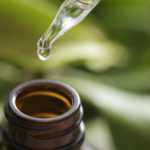How Much Vitamin A Is Safe?
I am concerned about your recommendations for supplemental vitamin A. Most conventional wisdom and research indicate that 20,000 I.U. of vitamin A can be toxic, even lethal. It scares me to follow this advice.
Andrew Weil, M.D. | November 28, 2014

Originally published February 21, 2002. Updated November 28, 2014.
You are right to be concerned about vitamin A toxicity. But first, please note that vitamin A comes in many forms. It is the animal form that is toxic, not plant-derived beta-carotene, which is the form I recommend in the Vitamin Advisor.
The upper limit of vitamin A set by the Food and Nutrition Board of the National Academy of Sciences is 10,000 IU per day. This limit refers to pre-formed Vitamin A, which can be found in foods and dietary supplements as palmitate, acetate or fish liver oil, all of which are derived from animal sources. Although vitamin A is an essential nutrient, an excessive, chronic intake of these forms of vitamin A can be toxic, leading to hair loss, confusion, liver damage, and – we now know – bone loss.
The form of vitamin A that I recommend in our Vitamin Advisor is beta-carotene in addition to other mixed carotenoids. These are precursor forms, meaning the body can make all the vitamin A it needs from beta-carotene, which is not toxic, unlike the animal forms of vitamin A. Carotenoids are plant pigments found in orange and yellow fruits and vegetables and dark leafy greens. Unlike pre-formed vitamin A, beta-carotene is water-soluble and does not accumulate in the body, although very high intakes – 100,000 IU or more a day – can result in an orange tint to your skin. Aside from being unsightly, this side effect is innocuous.
Carotenoid-containing fruits and vegetables have great cancer-protective value. In addition to beta-carotene, you need lycopene, the red pigment in tomatoes and watermelon that helps prevent prostate cancer. Other important carotenoids include alpha-carotene, found in yellow-orange and dark green vegetables and astaxanthin, a cancer-protective carotenoid found naturally in orange and red fruits and vegetables as well as dark leafy greens, wild salmon, trout, red sea bream and shrimp. Two other carotenoids, lutein and zeaxanthin, found in leafy green vegetables can protect against cataracts and macular degeneration.
I suggest taking a supplement that provides 15,000 I.U. of mixed carotenoids. While that does not excuse you from eating tomatoes, carrots, fruits, and greens, it is useful insurance against failing to supply your body with all the antioxidant protection it needs. Read labels carefully to make sure the product you’re using includes lycopene and lutein, and does not contain pre-formed vitamin A.
Andrew Weil, M.D.
Dosage Update, October, 2004
In order to provide the most up-to-date health information, I may change my recommendations from time to time. Due to compelling new research on carotene, I now suggest that you take 15,000 IU of mixed carotenes. (My previous recommendation was 25,000 IU; please adjust your dosage accordingly.)









